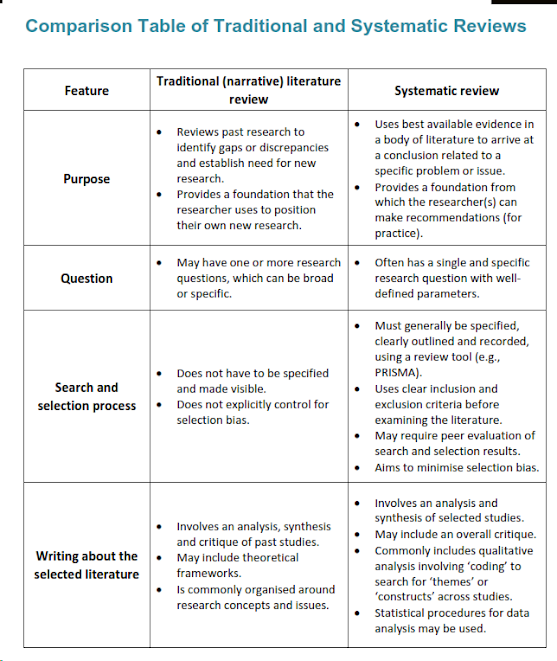A systematic review is a comprehensive and structured synthesis of the available evidence on a specific research question or topic. It follows a predetermined and systematic approach to identifying, evaluating, and summarizing relevant studies, with the aim of providing a robust and unbiased overview of the existing literature. Systematic reviews are commonly conducted in various fields, including medicine, social sciences, education, and more.
A systematic review is commonly characterised by:
- A well-defined research question
- Transparent search terms and database selection
- Exclusion/inclusion criteria with evaluation of search findings
- A research project structure with elements such as Introduction, Method, Result, Discussion
A systematic review is considered secondary research because it uses research by others and does not involve data collection for a new research project.
Key characteristics of a systematic review include:
- Research Question or Objective: Clearly defined research question or objective that the systematic review aims to address.
- Inclusion and Exclusion Criteria: Specific criteria are established for including or excluding studies based on factors such as study design, population, intervention, comparison, outcomes (often referred to as PICO criteria in healthcare).
- Search Strategy: A systematic and exhaustive search of relevant databases, literature repositories, and other sources to identify all potentially eligible studies.
- Study Selection: Rigorous selection process based on the predefined inclusion and exclusion criteria. Multiple researchers often independently screen and select studies to minimize bias.
- Data Extraction: Systematic extraction of key information from selected studies, such as study design, participant characteristics, interventions, outcomes, and results.
- Quality Assessment: Evaluation of the methodological quality of each included study to assess the reliability and validity of their findings.
- Data Synthesis: Integration and synthesis of the results from individual studies using statistical methods if appropriate. This could include meta-analysis, which combines data from multiple studies to derive overall effect estimates.
- Publication Bias Assessment: Evaluation of potential publication bias, where studies with positive or significant results are more likely to be published than those with negative or nonsignificant results.
- Critical Appraisal and Interpretation: Critical appraisal of the overall body of evidence, including strengths and weaknesses of individual studies. Interpretation of findings in the context of the research question.
- Conclusion and Implications: A conclusion that summarizes the evidence and discusses the implications for practice, policy, or future research.
Systematic reviews are considered a gold standard in evidence-based practice because of their methodological rigor and the comprehensive nature of their approach. They provide a valuable resource for researchers, clinicians, policymakers, and other stakeholders seeking a reliable summary of the current state of knowledge on a particular topic.
How is it different from a traditional literature review?
The purpose of systematic review is different from that of a traditional literature review.
Traditional (narrative) literature review | Systematic review |
|
|
A systematic review further
- involves a clearly articulated search process and selection criteria of the literature which is closely examined before being included in the review.
- uses a search and selection procedure that is transparent and can be replicated.
In a traditional literature review, the researcher
- selects and examines studies related to the research topic.
- does not have to make visible the search and selection process and criteria.
Types of systematic reviews
There are four common types of reviews using systematic methods:
- Systematic reviews
- Rapid reviews
- Scoping reviews
- Integrative reviews
| Systematic review | Rapid review | Scoping review | Integrative review |
|
|
|
|
A common feature of these reviews is the goal of reducing bias in the search and selection of studies.
This bias mainly refers to:
- Availability of resources
- Researcher’s degree of objectivity
- Degree of similarity in type and content of research
A common strategy for reducing bias:
- Extended time to perform a thorough search in published and ‘yet to be published’ articles
- Two or more reviewers following transparent processes of conducting searches and making selections
- Homogeneity of selected research articles













0 Comments